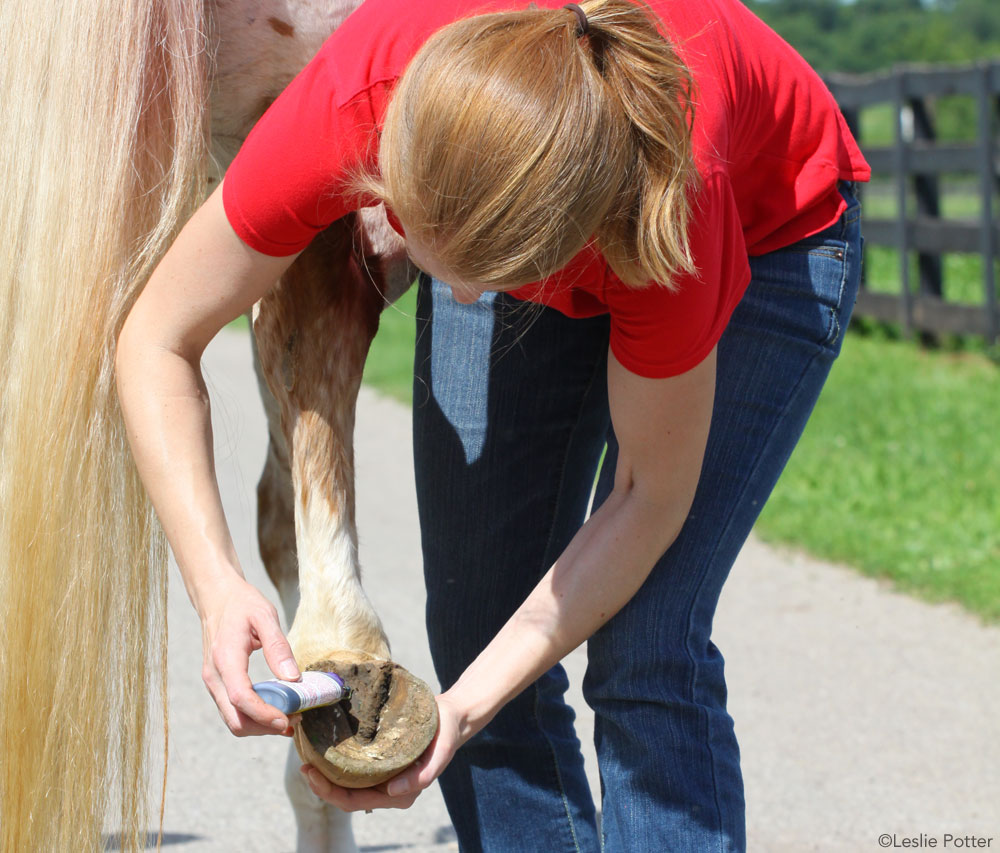
Q: My horse has had thrush for about five weeks. I’ve been keeping him in a dry pasture, but he isn’t getting any better. How should I treat it?
Thrush most commonly results from standing for prolonged periods in moist or unhygienic conditions, such as muddy pastures or dirty, wet stalls. Some horses seem more prone to thrush than others, and hoof conformation may be a predisposing factor, specifically hooves with long, contracted heels and very deep sulci.
The key factor in treating thrush is keeping the hooves dry, eliminating the ideal conditions for bacterial growth. You are correct to keep your horse in a dry pasture, but as you are experiencing, this often isn’t enough. Frequently, thrush will require topical astringents applied directly to the sole to accelerate the drying process and penetrate deep into the tissues. A commonly recommended astringent is diluted iodine. Packing the hooves with iodine-soaked cotton can provide longer contact time. Duct tape or a hoof boot can be used to keep this packing in place. Commercial thrush treatments are also available. Bleach is not recommended, as it can be too strong; if the frog gets too dried out, it can begin to flake away and lose some of its cushioning properties.
Having your farrier out to trim away excess sole and affected tissue will also help. Some horses may require multiple trims to debride all of the infection and improve airflow to the frog.
Anna O’Brien, DVM, is a large-animal ambulatory veterinarian in central Maryland. Her practice tackles anything equine in nature, from Miniature Horses to zebras at the local zoo, with a few cows, goats, sheep, pigs, llamas, and alpacas thrown in for good measure.
This article originally appeared in the January 2014 issue of Horse Illustrated magazine. Click here to subscribe!





